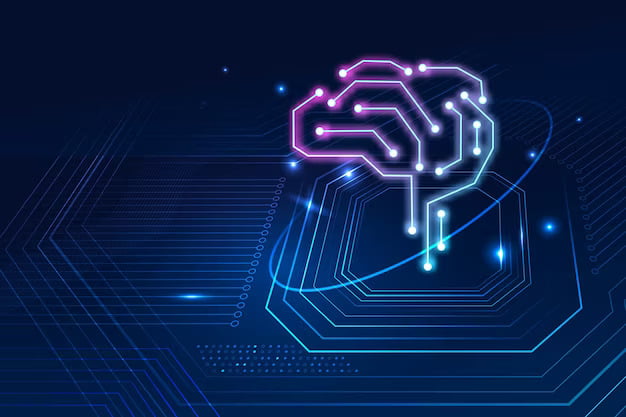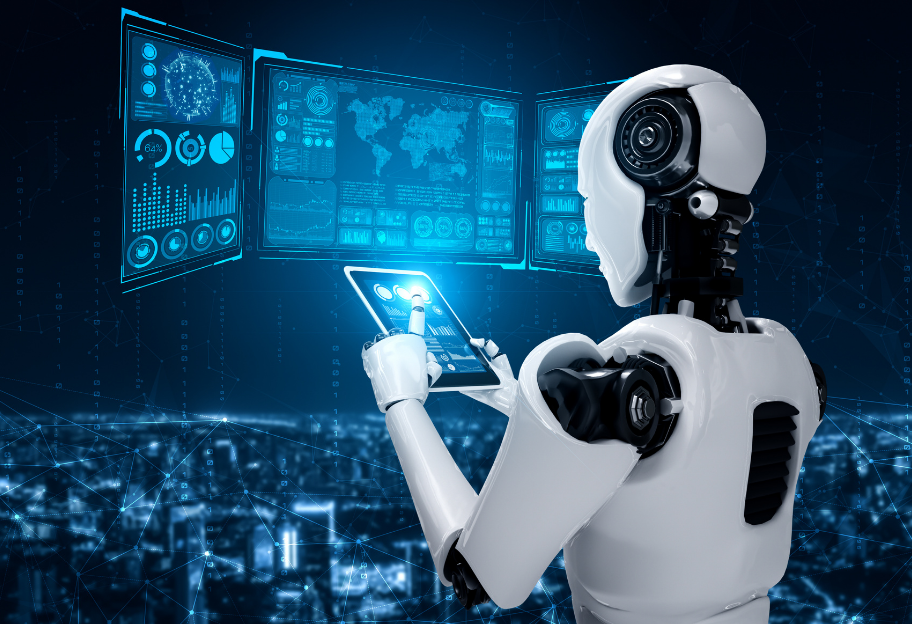Artificial Intelligence (AI) technology is a rapidly advancing field that has gained significant prominence in recent years. It involves the development of computer systems and software that can perform tasks that typically require human intelligence. These tasks can range from simple data analysis to complex problem-solving, and they often involve processes like machine learning, deep learning, natural language processing, and computer vision. In this article, we will explore the working cycle of AI technology and its advanced features, highlighting the impact it has on various industries.
Working Cycle of AI Technology:
The working cycle of AI technology involves several key stages, from data collection to decision-making. Here’s an overview of these stages:
- Data Collection: The foundation of AI technology is data. It starts with the collection of vast amounts of data, often from various sources, including sensors, databases, or the internet. This data can be structured (e.g., databases) or unstructured (e.g., text or images).
- Data Preprocessing: Raw data collected often requires preprocessing to clean, format, and prepare it for analysis. This stage involves tasks like data cleaning, data normalization, and data transformation.
- Feature Engineering: To make sense of the data, AI systems extract relevant features or attributes. Feature engineering involves selecting and transforming the most important data elements to improve the model’s performance.
- Model Development: The heart of AI technology is building models that can analyze and understand data. Machine learning models, including neural networks, are trained on the prepared data to make predictions, classifications, or decisions.
- Training: During the training phase, the model learns patterns and relationships in the data. It adjusts its parameters to minimize errors and improve accuracy. This process often involves iterative optimization.
- Evaluation: The trained model is evaluated to assess its performance. Various metrics and validation techniques are used to measure how well the model generalizes to new, unseen data.
- Deployment: Once a model is sufficiently accurate and reliable, it can be deployed for real-world use. This may involve integration into existing software systems or applications.
- Monitoring and Maintenance: AI models require ongoing monitoring to ensure their continued effectiveness. They may need periodic retraining to adapt to changing data patterns and maintain their accuracy.
- Feedback Loop: Continuous feedback and learning are crucial. User interactions and real-world data provide feedback to further improve the model and its predictions over time.
Advanced Features of AI Technology:
AI technology is continually advancing, leading to numerous innovative features and applications across various industries. Here are some advanced features and capabilities of AI technology:
- Deep Learning: Deep learning is a subset of machine learning that uses neural networks with multiple layers (deep neural networks). It has revolutionized AI by enabling it to handle complex tasks such as image and speech recognition. This technology has applications in autonomous vehicles, healthcare, and finance.
- Natural Language Processing (NLP): NLP enables computers to understand and generate human language. This technology powers chatbots, virtual assistants, and language translation services. Advanced NLP models like GPT-3 can generate coherent text and perform various language-related tasks.
- Computer Vision: AI technology has made significant progress in computer vision, allowing computers to interpret and analyze visual information from images and videos. This is used in facial recognition, object detection, and medical image analysis.
- Reinforcement Learning: Reinforcement learning is a type of machine learning where agents learn by interacting with an environment and receiving feedback in the form of rewards or punishments. It’s used in robotics, game playing, and optimizing complex processes.
- AI in Healthcare: AI is making breakthroughs in healthcare, from diagnosing diseases using medical images to drug discovery and personalized treatment recommendations. Predictive models can help identify potential health risks and optimize patient care.
- Autonomous Vehicles: AI technology plays a crucial role in self-driving cars, enabling them to perceive their surroundings, make real-time decisions, and navigate safely. This has the potential to revolutionize transportation and reduce accidents.
- Predictive Analytics: AI-driven predictive analytics helps businesses make informed decisions by forecasting trends, identifying anomalies, and optimizing resource allocation. This is valuable in supply chain management, finance, and marketing.
- AI in Finance: The financial industry benefits from AI’s ability to analyze large datasets, detect fraudulent transactions, assess credit risk, and make automated trading decisions. AI-powered chatbots also enhance customer service.
- Robotics and Automation: AI-driven robots and automation systems are used in manufacturing, logistics, and agriculture to perform repetitive and physically demanding tasks, improving efficiency and reducing labor costs.
- Personalization: AI technology is behind the personalized recommendations we see in streaming services, e-commerce, and social media. It tailors content and products to individual preferences, enhancing user experiences.
- AI Ethics and Bias Mitigation: With the growing use of AI, there is increased awareness of ethical concerns and biases in AI systems. Advanced AI technology includes efforts to mitigate biases, ensure transparency, and promote ethical AI development.
In conclusion, AI technology’s working cycle involves data collection, pre-processing, model development, training, evaluation, deployment, monitoring, and a feedback loop. The advanced features of AI encompass deep learning, natural language processing, computer vision, reinforcement learning, and applications in healthcare, autonomous vehicles, finance, robotics, and more. AI is transforming industries, improving decision-making, and enhancing user experiences, but it also raises ethical and regulatory challenges that need to be addressed as it continues to evolve.




Leave a Reply